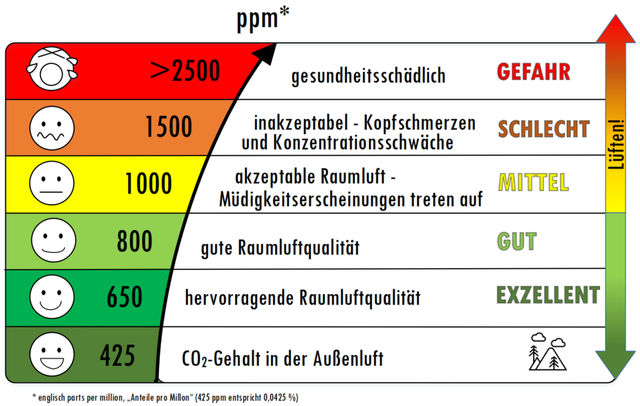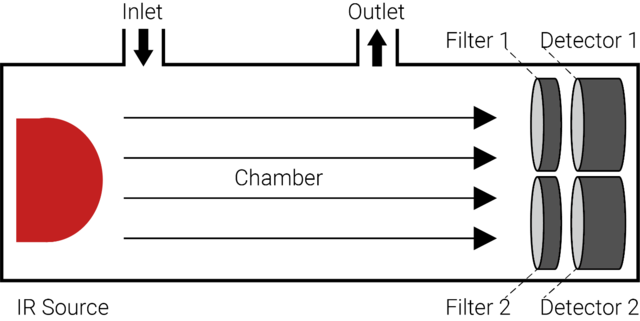Carbon dioxide (CO2) monitoring
Background
Did you know that we spend almost 90% of our time indoors and take around 23,000 breaths per day? Because the majority of your time is spent indoors, take a moment and get to know the indoor air you breathe! As previous research shows, Indoor Air Quality (IAQ)is important for occupants’ health. So good ventilation in the building is indispensable. Indoor air pollutants negatively affect people’s health, concentration and performance. High carbon dioxide (CO2) levels provide a useful indicator of ventilation performance.
Due to the health effects of poor IAQ, it is important to monitor the CO2 in occupied rooms and to raise the ventilation frequency when necessary to help reduce people’s risk of indoor health related issues in advance, as well as minimising energy wastage. In the ImpAQS project CO2 sensors are used to monitor the ventilation rate (and resulting indoor air quality) in school classrooms and lavatories.
Why measeure CO2 concentration?
Carbon dioxide (CO2) is a trace gas, present in the atmosphere at about 400 ppm by volume. CO2 is generated by respiration of aerobic organisms (human, plants, animals, etc.), decay or combustion of organic materials and fossil fuels burning. While CO2 is not directly regarded as a harmful indoor air pollutant (unless concentrations are very high), it is commonly used as a tracer gas indicator for indoor air quality. Too high a level of CO2 will affect the comfort and health of occupants, but it can also indicate the relative risk of other harmful contaminants (such as the aerosols created by airborne viruses such as the common cold, influenza and Covid-19). Therefore many organizations and authorities increasingly use CO2 concentration as one of several important indicators of indoor air quality. The table below describes the appropriate reference CO2 levels for indoor air quality in a classroom.

How do Non-Dispersive Infra-Red (NDIR) CO2 sensors work?
A number of manufacturers provide both indoor air quality monitoring sensors (e.g. Milesight AM103) and outdoor environment monitoring sensors (e.g. Milesight EM500-CO2) that are suitable for most common applications of CO2 measurement. Today most compact CO2 sensors use NDIR (non-dispersive infrared) technology. A NDIR sensor is usually made up of gas chamber, IR source, optical filter and IR detector. When the air diffuses into the gas chamber, CO2 gas molecules absorb the 4.26-micron band of infrared light from the IR source and the IR detector will read the remaining amount of light that was not absorbed by CO2 molecules or the optical filter and calculate the CO2 level (according to the Lambert Beer law).
There are two common types of NDIR sensor: single channel and dual channel. The Milesight sensors used in the ImpAQS study use a dual channel NDIR sensor, which uses an additional reference channel and are therefore more accurate than single channel sensor.
Note that all sensors need to be calibrated (and in some cases adjusted to the correct altitude) and then checked before they are deployed in a classroom to ensure that the readings are reliable.

